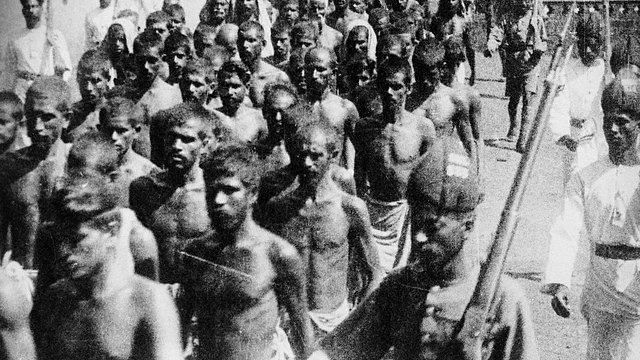
Thank you dear subscribers, we are overwhelmed with your response.
Your Turn is a unique section from ThePrint featuring points of view from its subscribers. If you are a subscriber, have a point of view, please send it to us. If not, do subscribe here: https://theprint.in/subscribe/
Covering, shielding, camouflaging, disguising are just some of the strategies that have been used to conceal from us what truly ensued in Malabar in 1921. This being the centenary year, there has been an obvious spurt of interest in that gruesome episode of Indian history, and people have suddenly begun talking about what they think happened.
With regard to historical research, a hundred years would pose no mammoth challenge, there are still a few people alive who have faint childhood memories of the time. Many of us have personally heard first-hand accounts of the turbulent times. Nevertheless, authentic evidence is scanty and a great many questions remain unanswered. It is a known fact that K Madhavan Nair’s is one of the most genuine, credible reports of the 1921 occurrences. But he laments that since he wrote his series of essays (later compiled into a book) soon after the outbreak had subsided, things were yet unclear. The authentication and collation of facts were just underway and people were still smarting from the aftermath to be completely objective. In the following decade or two, the natives of Malabar who had all suffered in one way or the other opted to but the black chapter behind them and move on with life – a choice one can easily relate to. By the time 1921 was far enough back in time to find a place in history, the harm had already been done. Academicians, politicians, religious and social leaders, media, and anyone else who stood to gain had put forth their own versions and the truth had become unrecognizable.
At the heart of the Malabar rebellion was the Battle of Pookottur. In the quiet, Eranad town in present-day Malappuram district, the local Mapla rebels, under the leadership of Vadakkeveetil Mammad, the Eranad Khilafat secretary and the better known Variyamkunnath Haji, locked horns with the mighty British forces on the 26th of August and when the world talks of the Malabar Rebellion of 1921, it is this battle that comes to mind. What happened before and after and what actually led to this, tends to fade into the background. It is this Battle of Pookottur that most minds focus on when one million dollar MCQ with three options surfaces- What in reality was the Malabar rebellion?
- Agrarian revolt
- Communal violence
- 3. A significant episode in India’s anti-colonial struggle for independence
When we zoom into the Pookottur battle specifically, the two former aspects make their presence felt substantially, but remain in the backdrop. Over a century since the exit of Tipu, the peaceful coexistence hitherto spontaneous had undergone a clear paradigm shift. Hindu landlords over a period of time had turned oppressive towards Moplah tenants and the British reflected this attitude, the Moplah Act of 1854 being a direct consequence. Discontent kept building steadily over the next fifty years. In the town of Pookottur, the row that transpired between the local landlord, Chinnanunni, the Tirumulpad of Nilambur and Mammad the Khilafat secretary who had been in his employ had reached its height by August ’21 but had no direct connection with the battle that was fought on the 26th.
Contemporary accounts distinctly allude to the hostile murders and mass conversions that occurred in the town and surrounding areas around this time. Madhavan Nair indicates that even C. Gopala Menon and himself, well respected by the local Moplahs, had to face encounters where conversion attempts were made against them and involvement of no less a leader than Variyamkunnam was suspected.
But if asked whether Hindu-Muslim enmity or anti-janmi protests pertained directly to the battle, the answer, come to think of it would have to be ‘no’. The causes for the discontentment of the Moplah community may have been mostly targeted against the landlords for their injustice. They may have had general grudges against the British authorities and personal ones against individual British officers and Indian officials in powerful positions for being on the side of the enemy and using their power to suppress and oppress poor Moplahs, the fact remains that they did fight bravely against Colonial power and attain martyrdom for their cause. When attempting to decide whether the Battle of Pookottur was part of the independence struggle one might wonder that despite this was their cause nationalistic in nature? While we are giving this a thought we might wonder if Pazhasshi Raja had a holistic India in mind when he fought the British? Did Tipu Sultan? Did Rani Lakshmi Bai or Mangal Pandey?
It may not be wrong to condemn the Pookottur martyrs for other crimes but in all fairness didn’t they fight the British?
-Anjana Varma
These pieces are being published as they have been received – they have not been edited/fact-checked by ThePrint.
Also read: SubscriberWrites: Need Indian ‘jugaad’ to come up with a cheap oxymeter

COMMENTS